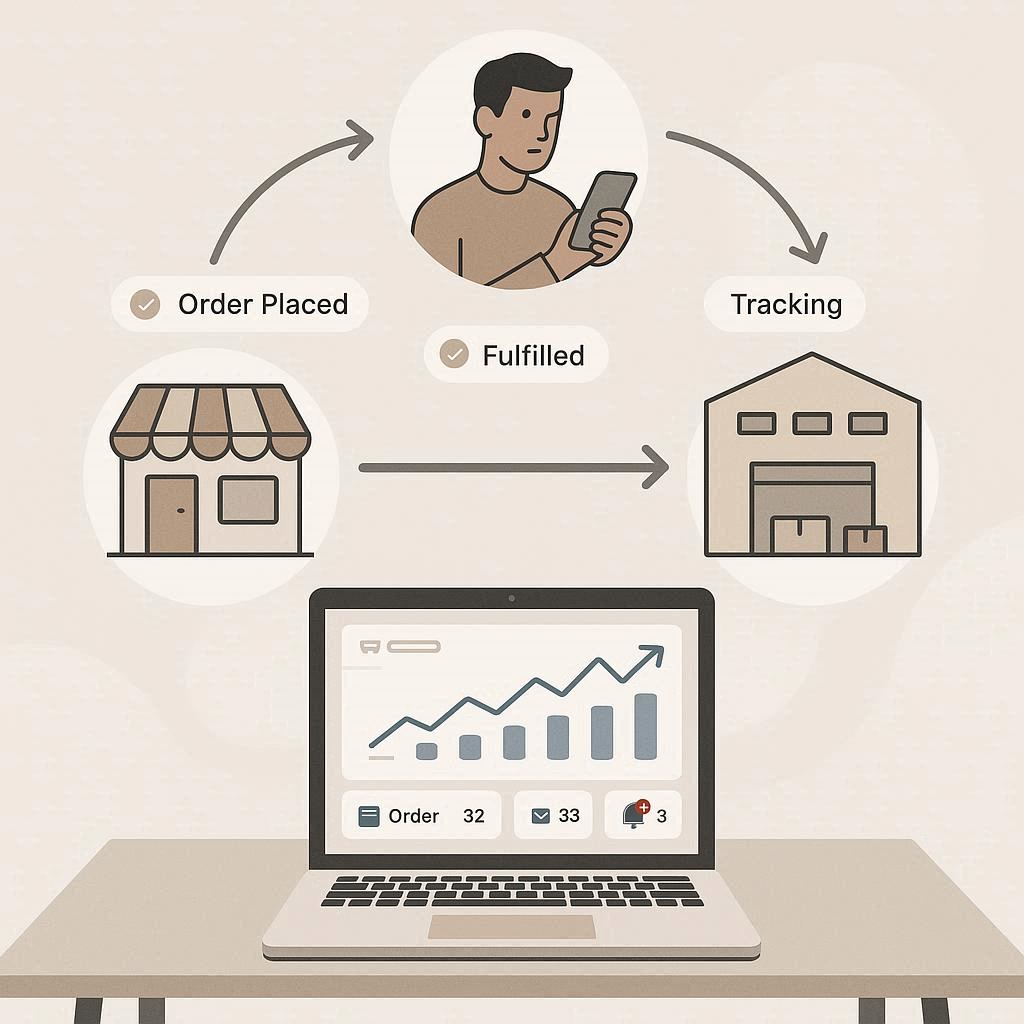Dropshipping gets pitched as “online income without inventory.” That’s half true. You won’t pre-buy stock, but you will manage product research, supplier relationships, marketing, customer support, and cash flow. This article explains how the model actually makes money—where the margins come from, what levers you control, and the pitfalls to avoid—so you can decide if it fits your goals.
What dropshipping is (and isn’t)
In a dropshipping setup, you list products on your online store, a customer purchases, and your supplier ships directly to them. Your profit is the difference between the price you charge (retail) and the total cost to fulfill (product cost + shipping + transaction fees + apps/overhead). There’s no bulk inventory, but there is operational work: order routing, refunds, returns, tracking numbers, and ad/account hygiene.
If you’re brand-new and want a step-by-step primer, this guide to how to make money dropshipping breaks down core moves and common mistakes in plain language.
Follow the math, not the hype
A simple profit equation helps you think clearly:
Profit per order = Retail price – (Product cost + Shipping + Payment fees + App fees + Ad cost per order)
Healthy margins for beginners usually land around 20–30% after fees, provided you keep ad costs (CPA) under control. Two practical levers:
- Average order value (AOV): Use bundles, tiered quantity discounts, and complementary add-ons to lift AOV.
- Acquisition cost: Test creatives quickly, kill underperformers, lean into winning angles, and add cheaper channels (search, email, organic social) to offset paid traffic.
Choose products with intent
Winning items tend to share three traits:
- Clear problem/benefit: Demonstrably useful or delightfully novel.
- Decent margin room: 3–4× markup potential or at least 60% gross margin before ads.
- Ship-ability: Light, non-fragile, low return risk, and compliant with platform rules.
Avoid ultra-commoditized products with race-to-the-bottom pricing and heavy, fragile goods that eat margin in shipping/returns.
Supplier quality is your brand
Even if you don’t touch inventory, customers will judge you on speed and quality. Vet suppliers for:
- Reliable handling times and realistic tracking.
- Consistent product quality (order samples).
- Responsive support with clear replacement/refund policies.
Where possible, prefer domestic or expedited shipping lanes for your main markets. Faster delivery reduces refund rates and boosts repeat purchases.
Store setup that converts
- Platform: Use a mainstream ecommerce platform for payments, taxes, and app integrations.
- Pages that matter: Fast product pages with benefit-led headlines, short explainer bullets, social proof, and clear shipping/return info.
- Trust signals: Transparent policies, accessible support email/chat, and real photos/video of the product in use.
- Post-purchase: Automatic order confirmations, branded tracking pages, and proactive delay notices cut support load.
Traffic: start narrow, diversify fast
- Paid social: Quick testing ground for angles and creatives. Focus on thumb-stopping video, product-in-action demos, and problem/solution storytelling.
- Search ads & SEO: Capture existing demand; great for evergreen products.
- Email/SMS: Turn one-time buyers into repeat customers with flows (welcome, abandon cart, post-purchase, win-back).
- Creators/UGC: Commission short authentic clips; often cheaper and more persuasive than polished ads.
Operations and customer experience
Set clear SLAs (shipping windows, response times). Use macros and helpdesk tools to keep support consistent. Track refund rate, chargebacks, on-time delivery, and product defect rate; they’re early warning signals for supplier or listing issues.
Legal, taxes, and compliance
Register your business where appropriate, collect/remit sales tax as required, and respect platform ad policies (claims, before/after images, restricted categories). Clear disclaimers and accurate product descriptions protect both customers and your accounts.
Common pitfalls to avoid
- Scaling before proof: Don’t raise budgets without at least a few dozen profitable orders and stable metrics.
- Ignoring cash flow: Payment processors may hold funds; keep a buffer for ad spend and refunds.
- Weak differentiation: If all you do is list the cheapest version, you’ll fight on price. Differentiate with content, offers, bundles, and better service.
A focused starting plan
- Validate 1–2 products with small-budget tests.
- Tighten pages and creative based on data.
- Lock in a responsive supplier and faster shipping where possible.
- Layer in email/SMS to raise AOV and LTV.
- Standardize support and monitor quality metrics weekly.
Dropshipping isn’t a “push-button” ATM—but with disciplined product selection, honest expectations, and steady optimization, it can become a real, margin-positive business.
